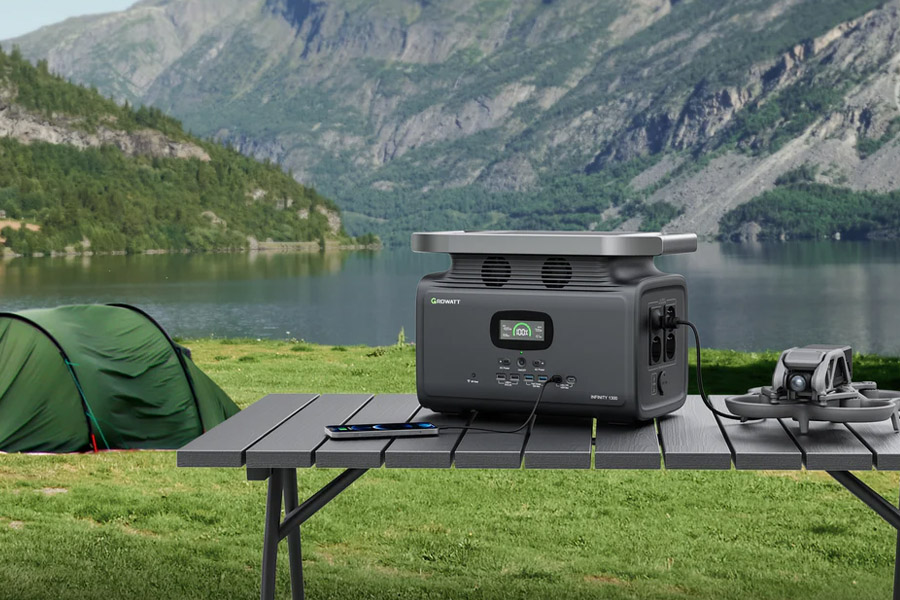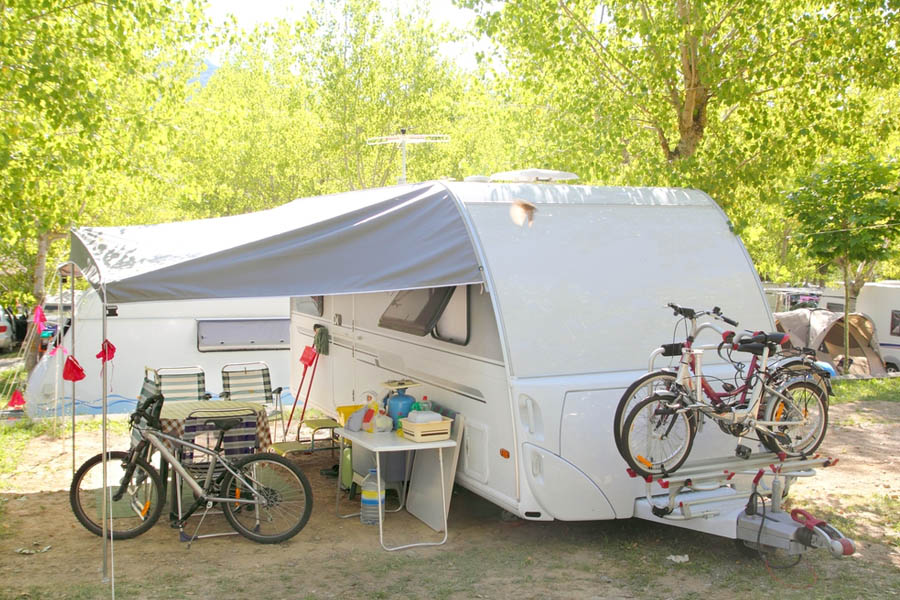Now Reading: Power Your Camping Adventures with Reliable Portable Stations
-
01
Power Your Camping Adventures with Reliable Portable Stations
Power Your Camping Adventures with Reliable Portable Stations

A scene: dusk, a ridge, and your phone at 2%
You’re perched on a ridge as the sun collapses into gold and violet, ready to capture the moment — and your phone dies. That tiny black screen can flip a perfect evening into a scramble for directions, warmth, or a way to call for help. Portable power stations change the scene: they keep your lights on, your GPS alive, and your peace of mind intact. These compact units are the unsung heroes of modern camping, blending convenience, safety, and a quieter footprint than a noisy gas generator.
Why campers need specialized power solutions
Car batteries and noisy generators have their place, but they aren’t built for modern camping needs. Portable power stations are purpose-built for sustained, safe output; they’re lighter, cleaner, and usually quieter. They’re ideal for CPAP machines, refrigeration for medications, emergency radios, and charging multiple devices without fumes or a wake-up call to the whole campsite. Best of all, many can be topped up with solar panels, so you can stay off-grid longer while leaving the wilderness intact.
Essential features to look for
Portability and weight
If you’re hiking deep into the backcountry, weight becomes everything. Ultralight options under ten pounds make sense for multi-day treks; car campers can afford larger, heavier units with far greater capacity. Think ergonomics: comfortable handles and protective casing make transport less of a chore.
Battery capacity and output variety
Capacity is measured in watt-hours (Wh). A 500Wh unit, for example, will recharge a phone dozens of times, run LED lights for long stretches, and keep a small fridge humming for many hours. Look for a mix of outputs — AC outlets for larger appliances, multiple USB-A and USB-C ports for phones and cameras, and 12V ports for accessories — so you can power several devices at once without juggling adapters.
Recharge options and speed
Versatility here is king: wall charging, car charging, and solar compatibility give you options depending on where you are. Solar will usually take a full day under good sun, while wall charging is faster; be mindful of units that support pass-through charging so you can power devices while recharging the station itself.
Durability and weather resistance
An IPX4 rating or higher is useful for resisting rain and splashes; ruggedized corners and reinforced casings stand up to bumps and knocks. Temperature tolerance matters too — batteries don’t like extreme cold or heat, so check operating ranges and choose a unit that performs at the elevation and climate of your trip.
Noise and dual use
One of the quieter benefits of modern stations is stealth: many run so quietly you’ll forget they’re on. A whisper-quiet unit preserves the camping vibe at night and can double as a home backup during outages, stretching value beyond the trailhead.
Selecting the right station for your trip
Start with an inventory of everything you plan to power: list each device, its wattage, and how many hours per day you’ll use it. Add those numbers together, then multiply by a safety factor — 1.5 is a practical buffer — and you’ll have a target watt-hour capacity. Match that to a unit with the right mix of ports and recharge options, and factor in weight. Finally, consider how you’ll charge it in the field: solar panels, your vehicle, or fully charged before departure.
Pre-trip preparation and kit organization
Charge your station fully 24 hours before departure. Build a neat kit with short cables bundled, adapters, and a small toolkit; store everything in a waterproof bag. Test your solar panels and every charging method at home so nothing surprises you on trail. Label cords and keep spares; small, tidy preparation saves hours and frustration when you’re miles from a store.
On-site power management
Prioritize: emergency comms and medical devices go first, then navigation and lighting, then comfort items. Place solar panels perpendicular to the sun and track the angle as it moves for maximum output. Conserve power by dimming screens, switching devices to low-power modes, and charging during daylight when solar input is strongest. Keep a 20–30% buffer for unplanned needs — storms and delays happen.
Safety and maintenance best practices
Keep the unit ventilated with at least a few inches of clearance; don’t shove it in a closed tent pocket or under a tarp while charging. Store batteries at partial charge (around 40–60%) if you’ll be inactive for a while, and recharge every few months in long-term storage. Check for firmware updates, use manufacturer-recommended cables, and inspect ports and connectors after trips — dust and grit can corrode contacts and reduce efficiency.
Practical tips that save power and sanity
Use short, direct charging cables to reduce losses. Bundle similar charging times so you’re not continuously cycling the station. Multi-purpose your phone: camera, GPS, and emergency beacon consolidated into one device reduces cumulative draw. And remember: the quiet that comes with battery power is part of the luxury — it keeps the night sounds natural and your campsite calm.
FAQ
How much battery capacity do I really need?
Estimate the watt-hours of every device you’ll bring, sum them, then multiply by 1.5 for a safety margin; that gives you a practical capacity target.
Can I charge the station with solar while camping?
Yes — with good sunlight and compatible panels you can replenish substantial charge during the day, though full recharge often takes several sunlit hours.
Is it safe to use a power station inside a tent?
It’s safer than a gas generator, but you still need ventilation and clearance; avoid enclosed spots and keep it away from moisture and flammable materials.
How should I store the station between trips?
Store at around 40–60% charge in a cool, dry place, and top up every few months to preserve battery health.
Will running multiple devices at once shorten battery life?
Running multiple devices increases discharge rate but doesn’t permanently shorten battery life if you avoid deep discharges and follow the manufacturer’s charging guidelines.
Should I worry about firmware updates?
Yes — updates can improve performance and safety, so apply them when convenient and before long trips.





















